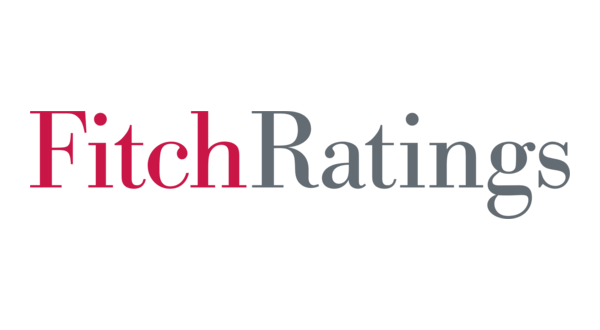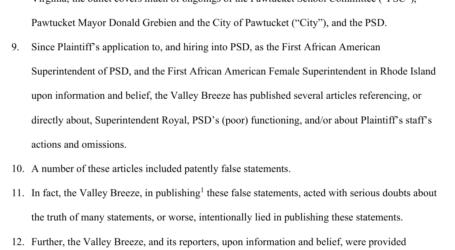Rhode Island Airport Corporation: In The News! AFSCME Council 94 Local 2873 Mediation & Fitch Ratings Upgrades Rhode Island Airport Corporation Credit Rating to ‘A’

Press Statements: Rhode Island Air Port Corporation
Rhode Island Airport Corporation Announces Successful Outcome of Mediation Process
Today, the Rhode Island Airport Corporation Board of Directors unanimously approved the 2024-2027 collective bargaining agreement with AFSCME Council 94 Local 2873. The agreement includes a 5 percent wage increase retroactive to July 1, 2024, a 4 percent wage increase in July 2025, and a 3 percent increase in July 2026. The agreement also includes a one-time bonus of $500. Compared locally, these wage increases and bonuses exceed benchmarks. This development comes on the tail of recent news that RIAC has become the country’s fastest-growing airport and received its fourth credit rating increase in 2 years.
“We are pleased this matter has been finalized and has resulted in a positive outcome for all parties. Both the union and management agreed to enter into mediation last month, which proved to be a highly successful vehicle for resolving our differences,” stated Iftikhar Ahmad, President and CEO of the Rhode Island Airport Corporation. “We value our union employees and the collective role they play in the accomplishments we have had in recent years. This contract properly reflects their services and commitment to RIAC’s overall mission.”
Fitch Ratings Upgrades Rhode Island Airport Corporation Credit Rating to ‘A’
RIAC receives 4th Credit Rating upgrade over the last 2 years
Fitch Ratings has upgraded the rating on approximately $54 million of outstanding airport revenue bonds issued by the Rhode Island Commerce Corporation on behalf of the Rhode Island Airport Corporation (RIAC) from ‘A-’ to ‘A,’ with a rating outlook of “stable.” The full Fitch Ratings report can be viewed here.
In announcing the upgrade, Fitch Ratings cited several positive factors, including Rhode Island T. F. Green International Airport’s (PVD) robust financial position, highlighted by reduced leverage, strong coverage levels, and strong cash balances. The agency also noted that passenger levels have increased, with new airline services underway to boost enplanement growth and volumes.
“We are thankful for Fitch Ratings’ continued confirmation of our strong financial stability and growth,” said Iftikhar Ahmad, President and CEO of the Rhode Island Airport Corporation. “RIAC’s ‘A’ credit rating truly reflects the commitment of all who have worked so hard to help us become one of the best airports in the world and help boost our state’s aviation-related economy.”
“It is heartening to know that respected credit agencies continue to affirm the wisdom of RIAC’s efforts to strengthen our airport’s long-term financial standing and build solid relations with aviation stakeholders,” said Jonathan Savage, Chair of RIAC’s Board of Directors. “This positive news reflects the coordinated efforts of federal and state leaders to support our airport and grow our state’s economy.”
The recent credit upgrade marks the fourth time RIAC has received a revenue bond upgrade in two years. In December 2023, Fitch Ratings upgraded RIAC’s bond rating to ‘A-’ from ‘BBB+.’ Earlier in 2023, S&P Global upgraded RIAC’s long-term and special facility bond ratings to ‘A.’ Key strengths cited by S&P at the time included RIAC’s:
• Very strong management and governance
• Very strong liquidity and financial flexibility
• Very strong debt and liability capacity and a manageable capital improvement plan
The new Fitch Rating of ‘A’ reflects the airport’s predominantly origin and destination (O&D) air traffic base of about two million enplanements within a competitive air trade market. Under Fitch’s rating case, the airport’s low leverage is sustainable given the amortization of outstanding debt and expectations that upcoming capital needs will not result in a higher debt position. Fitch expects the airport will continue to maintain a competitive cost per enplanement (CPE) and a declining leverage profile supported by its robust liquidity levels.
Fitch Ratings considers Rhode Island T. F. Green International Airport’s market share to be well-diversified, with Southwest Airlines consistently holding the largest share of enplanements, as well as several growth catalysts underway with recently expanded services from Breeze Airways and other carriers.
The credit rating agency also found that RIAC’s key facilities are well maintained, with a well-defined and well-funded capital improvement program focused on terminal improvements, runway and taxiway rehabilitation, and the development of a south cargo ramp. Fitch also determined that annual debt service payments on outstanding bonds are profiled on a declining path within the next several years, that the airport’s financial profile is solid, with strong liquidity and unrestricted reserves, and that it has a low debt position.

Fitch Upgrades Rhode Island Airport Corporation’s Airport Rev Bonds to ‘A’; Outlook Stable
The airport also has approximately $79 million outstanding in the form of parity private placement loans and series 2013A revenue bonds not rated by Fitch.
RATING RATIONALE
The upgrade reflects the airport’s robust financial position, highlighted by reduced leverage, strong coverage levels and strong cash balances. Passenger levels have increased, with new airline services underway to boost enplanement growth and volumes. Under Fitch’s rating case, the airport’s low leverage is sustainable given the amortization of outstanding debt and expectations that upcoming capital needs will not result in a higher debt position.
The current airline use and lease agreement, extending through 2028, supports stable revenue generation and maintains a competitive airline cost profile.
The rating reflects the airport’s predominantly origin and destination (O&D) traffic base of about two million enplanements within a competitive air trade market. Limited capital needs, modest debt levels and substantial liquidity provide ample cushion to sustain any potential weakness in operational performance without requiring additional borrowings.
Additionally, the airport benefits from a hybrid use and lease agreement that provides extraordinary coverage protection when necessary. Fitch expects the airport will continue to maintain a competitive cost per enplanement (CPE) and a declining leverage profile supported by its robust liquidity levels. However, the small enplanement base with regional competition from Boston-Logan airport and the potential for recurring volatility in traffic performance currently restricts further positive rating.
KEY RATING DRIVERS
Revenue Risk – Volume – Midrange
Small Market with Competition: Rhode Island T.F. Green International Airport (PVD) is a small hub serving the state of Rhode Island and neighboring states. Traffic is predominantly O&D; however, this is offset by the highly competitive greater New England airport environment and historical enplanement volatility caused by carrier route rationalization.
Market share is well-diversified, with Southwest Airlines consistently holding the largest share of enplanements, historically around 30%-40%. Growth catalysts are underway with recently expanded services from Breeze Airways and other carriers. However, the airport remains susceptible to carrier decisions that substantially impact future volumes. Historically, RIAC has maintained a competitive CPE, averaging around $12 over the past decade. Fitch notes that CPE levels have been trending downwards and are projected to remain competitive.
Revenue Risk – Price – Stronger
Rate-Setting Flexibility Elevates Costs: The stronger price risk score reflects the independence and flexibility of the rate-making methodology, which includes extraordinary coverage protection. The airport’s hybrid-use and lease agreement extends through 2028 and includes a revenue sharing component. The agreement provides for the calculation of terminal rentals under a commercial compensatory rate-making methodology and landing fees using a residual rate-making methodology. Fitch expects this agreement to provide an adequate cost recovery methodology, given the airport’s operating and debt cost profile.
Infrastructure Dev. & Renewal – Stronger
Modest Capital Plan: RIAC’s key facilities are well maintained and will be managed by a capital improvement program (fiscal 2025-2029) moderately sized at $341 million. The program focuses on terminal improvements and renovations, runway and taxiway rehabilitation, and the development of a south cargo ramp.
Funding is well-defined and will be primarily supported by grants, airport funds, and passenger facility charges. RIAC maintains significant debt capacity; however, management does not expect to issue additional debt to support the current and longer-term capital needs, which Fitch views favorably.
Debt Structure – 1 – Stronger
Conservative Structure: The airport’s outstanding debt is fixed-rate with a level-to-declining amortization profile. Covenants and additional bond test levels are typical compared to most U.S. airports, but not all parity debt is supported by cash-funded debt service reserves. Annual debt service payments on outstanding bonds are profiled on a declining path within the next several years.
Financial Profile
The airport’s financial profile is solid, with elevated coverage levels, strong unrestricted reserves, and a low debt position. The indenture-based debt service coverage ratio (DSCR), which includes federal grants, the rolling coverage account and general-purpose fund transfers from net revenue sharing with carriers, remained solid 2.4x in fiscal 2024. Excluding the coverage account and general-purpose fund transfers, coverage was narrower at 1.9x.
Leverage is low at 0.1x in fiscal 2024 and is expected to reach net negative levels in 2025 and future fiscal periods. This benefits from no anticipated additional debt needs in the near term to support capital spending, along with unrestricted cash and reserves exceeding debt outstanding. Liquidity has significantly grown in recent years, with unrestricted reserves consistently equal to over 900 days cash on hand (DCOH).
PEER GROUP
RIAC’s comparable peers include Birmingham (A/Stable), El Paso (A/Stable), and Long Beach (A-/Stable). Among peers that provide secondary service or experience competition from larger nearby airports, RIAC maintains stronger financial metrics than Long Beach, with RIAC maintaining negative leverage compared to around 3x for Long Beach.
RIAC and El Paso maintain similar profiles, with enplanements around 2 million and negative leverage. However, RIAC maintains stronger liquidity than El Paso’s 450 DCOH. Birmingham has a slightly smaller enplanement base of around 1.5 million; however the two airports maintain similar financial profiles with negative leverage and liquidity near 1000 DCOH.
RATING SENSITIVITIES
Factors that Could, Individually or Collectively, Lead to Negative Rating Action/Downgrade
–A weakened financial profile resulting in leverage sustained above 2.0x.
–Material volatility or sustained reductions in traffic that materially exceed Fitch’s rating case expectations.
Factors that Could, Individually or Collectively, Lead to Positive Rating Action/Upgrade
–Upward rating migration not likely in the near term, although sustained traffic growth and strong cost recovery terms with airlines and limited debt plans for capex funding could benefit the credit profile.
SECURITY
The bonds are secured by a pledge of net revenues of the airport and certain funds established by the bond ordinance.
REFERENCES FOR SUBSTANTIALLY MATERIAL SOURCE CITED AS KEY DRIVER OF RATING
The principal sources of information used in the analysis are described in the Applicable Criteria.
ESG Considerations
The highest level of ESG credit relevance is a score of ‘3’, unless otherwise disclosed in this section. A score of ‘3’ means ESG issues are credit-neutral or have only a minimal credit impact on the entity, either due to their nature or the way in which they are being managed by the entity. Fitch’s ESG Relevance Scores are not inputs in the rating process; they are an observation on the relevance and materiality of ESG factors in the rating decision. For more information on Fitch’s ESG Relevance Scores, visit https://www.fitchratings.com/topics/esg/products#esg-relevance-scores.




